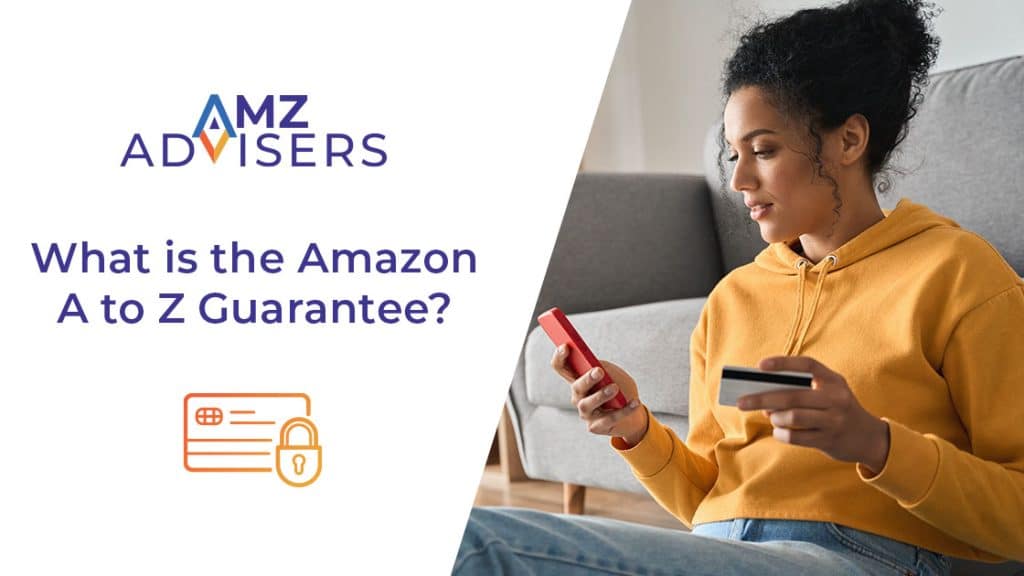Knowing the difference between Amazon sponsored products vs sponsored brands can help you make a better choice for your business.
When selling on Amazon, you need the right advertising strategy to increase your revenue. Investing in ads will make you stand out, especially if your product is ranking and selling well.
If you have been looking for ways to grow your Amazon store, you probably know a thing or two about sponsored brands vs sponsored products. Are they the same? How can you know which one you should choose?
Let’s have a glimpse of what we need to know about Amazon sponsored products vs sponsored brands. Below you will find out when to use each of them, and how you can combine both.
What are Amazon Sponsored Products?
Sponsored Products are a type of pay-per-click (PPC) advertisement designed to promote individual product listings on Amazon. These ads appear in search results pages and product detail pages, making it easier for customers to discover and purchase new offers.
Amazon Sponsored Products are especially effective at boosting visibility of product listings and driving traffic directly to product pages.
To create Sponsored Products ads, you must choose relevant keywords or product categories that align with your offers. When a customer searches for these key terms, your ad can appear alongside the organic search results.
You’ll only pay Amazon when a customer clicks on their ad, making Sponsored Products a cost-effective way to reach your target audience.
Related content: Amazon Keyword Targeting
Requirements
Thinking about running an Amazon Sponsored Products campaign? Here are a few requisites you should consider:
- Professional seller account. it might seem obvious, but you need to become one of the 9.7 million registered sellers. Individual accounts can’t use Sponsored Products.
- Product Category Restrictions. Not all product categories are eligible for advertising. For example, products in the adult category or certain restricted items may not qualify for Sponsored Products ads.
- Buy Box eligibility. Your product must be eligible to win the Buy Box. Only Buy Box-eligible products can use Sponsored Products.
- Stock availability. Your product must be in stock. Amazon won’t show ads for products that are out of stock.
- Optimized product listings. Your listings should have clear, high-quality images, good descriptions, and accurate details. Well-optimized listings have better chances to display Amazon ads.
What are Amazon Sponsored Brands?
Sponsored Brands are ads that feature your brand’s logo, a customized headline, and a selection of your products. Unlike Amazon Sponsored Products, which advertise individual items, Sponsored Brands provide a more comprehensive view of your brand.
Amazon Sponsored Brands appear at the top of search results. Their goal is to increase brand visibility and drive traffic to your Amazon Store or a custom landing page.
Features
One key feature of Sponsored Brands is their customizable headline. Let’s say that you sell eco-friendly cleaning products. Then, you might use a headline like “Clean Green with Our Top Eco-Friendly Products” to communicate your brand message and attract customers.
Another important feature is the inclusion of your brand’s logo in the ad. This helps make you easily recognizable to shoppers. Displaying your logo in the ad makes your brand identity stronger and helps customers remember you in the long term.
Amazon Sponsored Brands ads also feature a selection of at least three of your products. This allows customers to see a variety of what you offer.
If you sell kitchen gadgets, you can showcase a blender, toaster, and coffee maker in the same ad. This gives shoppers a better sense of your product range and it also provides three different opportunities to make a sale.
When customers click on a Sponsored Brands ad, they are taken to your Amazon Storefront or a custom landing page. This page lets them explore more of your products and learn about your brand.
For example, if you have a range of home appliances, your Storefront might display all your products along with customer reviews and special offers.
Requirements
Thinking about using Amazon Sponsored Brands? Here are a few requisites to consider:
- Brand registry. You must enroll in Amazon Brand Registry before you even think about sponsored brand ads.
- Storefront or landing page. You need an Amazon Storefront or a custom landing page. This is where the ad will direct traffic.
- Display three products. You need to include at least three products in your ad. This lets customers see more of what you offer.
- Amazon FBA or FMB. Your products should be available through Amazon FBM or FBA. This helps Amazon know that your products are ready for quick shipping and you won’t leave customers waiting.
Sponsored Products vs Sponsored Brands
Even when both Amazon Sponsored Products and Amazon Sponsored Brands have similar goals, they have essential differences.
Sponsored Products focus on individual items. For example, if you sell a coffee maker,the ad would highlight that one coffee maker when shoppers search for terms like “best coffee maker.” These ads are great if you want to drive sales for a specific product.
Sponsored Brands work more like Amazon sponsored display ads, meaning that they promote your entire brand. Instead of just one product, these ads show your brand logo and several products together.
For instance, if you sell kitchen gadgets, the ad could showcase your coffee maker, blender, and toaster all in one ad. This is ideal for building brand awareness and encouraging customers to explore your full product range.
Another difference is where these ads lead customers. Sponsored Products take shoppers directly to the product page, while Sponsored Brands often direct them to your brand’s Amazon Store or a special page showing multiple products.
Last but not least, there’s a clear difference on how sponsored products and sponsored brands target customers. Sponsored Products use keywords, while Sponsored Display targets people based on their shopping behavior, even if that means showing ads off Amazon.
When to Use Amazon Sponsored Products
Amazon Sponsored Products are ideal when you want to focus on increasing sales for specific items. These ads target customers who are already searching for products similar to yours, which helps drive immediate sales.
Use Sponsored Products in these cases:
- Launching a new product. If you’ve just launched a new pair of running shoes, setting up an ad targeting keywords like “lightweight running shoes” will help get your product noticed.
- Competing in crowded categories. If you sell wireless earbuds in a crowded market, running ads targeting specific features like “noise-canceling earbuds” or “affordable wireless earbuds” can help push your product to the top of search results.
- Seasonal or limited-time offers. What if you have products that are only available for a short period, like holiday-themed items or seasonal clothing? You could run ads for “Christmas decorations” or “summer beachwear” to attract shoppers looking for those items.
When to Use Amazon Sponsored Brands
Amazon Sponsored Brands are more about showcasing your brand and building long-term customer loyalty. These ads highlight multiple products and your brand logo, making them a great tool for brand recognition.
Consider using Sponsored Brands when:
- Building brand awareness. If you’re launching a line of skincare products, you can use a Sponsored Brands ad to show off your logo along with multiple products like cleansers, moisturizers, and serums. This helps build trust and encourages shoppers to browse your full range.
- Driving traffic. If you have an Amazon Store, you’d want shoppers to see your entire catalog and learn more about your brand. For example, if you sell electronics, you can run an ad featuring your brand’s best-selling gadgets, leading customers to a landing page where they can explore other products.
- Promoting multiple products. Sponsored Brands are also useful when you want to highlight a collection of items that work well together. For example, if you sell fitness gear, you can showcase your yoga mats, resistance bands, and dumbbells. In doing so, you’ll encourage shoppers to buy several products from your line at once.
Can you use both Sponsored Products and Sponsored Brands?
Sometimes, the best strategy is to use both Sponsored Products and Sponsored Brands together to cover different parts of your customer journey.
Let’s say you’re running a promotion for a blender. You could use a Sponsored Product Ad to directly target customers searching for blenders and push that specific item. At the same time, you could use a Sponsored Brands ad to promote your overall brand, showcasing the blender along with products like food processors and juicers.
This approach helps you capture customers who are interested in just one product, while also drawing attention to your full product line.
Final thoughts
As with any other resource, choosing between Amazon sponsored products vs sponsored brands will depend on your advertising goals.
If you’re looking for quick sales and short term results, maybe going for Sponsored Products will give you the instant gratification you are looking for. But if you are just starting and you want people to get to know your brand, it’s best to try out Sponsored Brands.
No matter what you choose, make sure to track your ad performance, in terms of impressions and conversions, to know when to change something. Also, make sure you have an optimized Amazon store in place so you can support your chosen strategy.
Author






